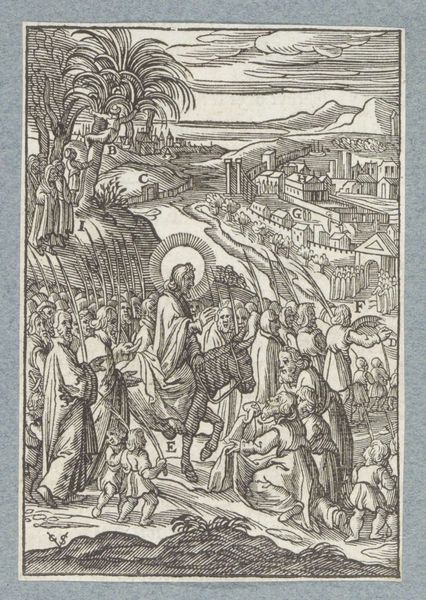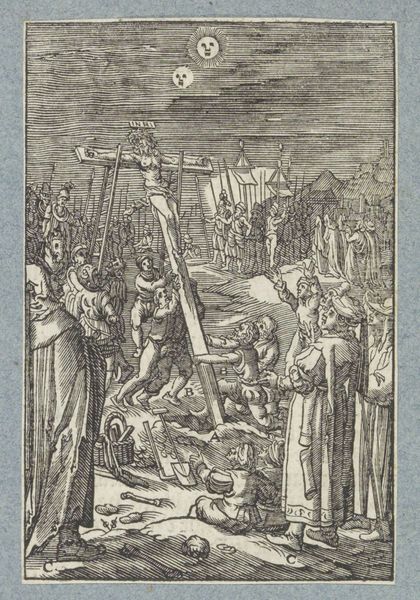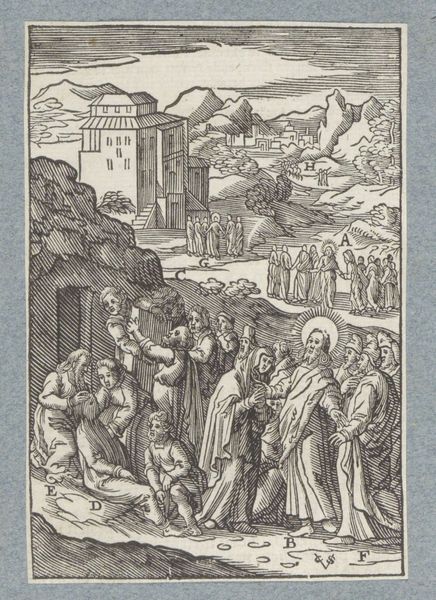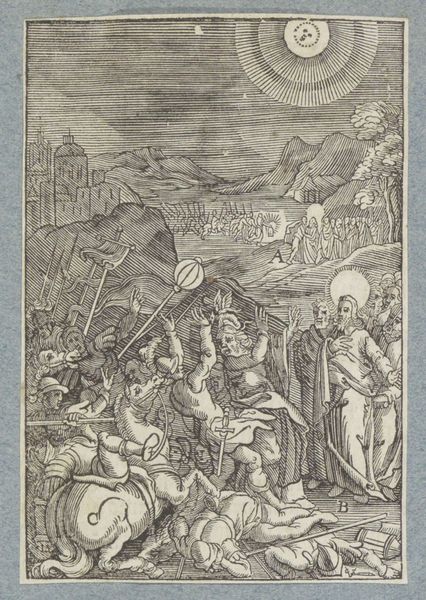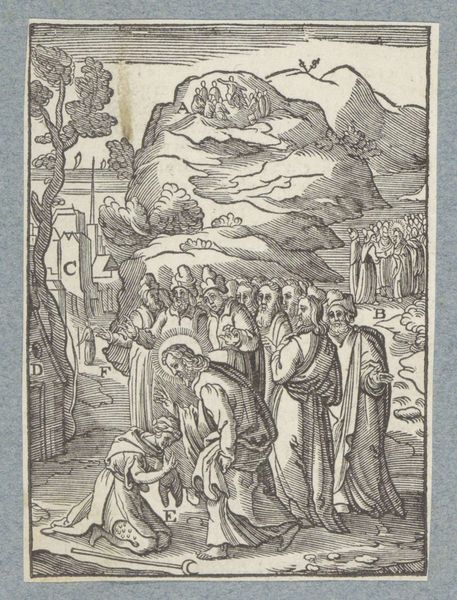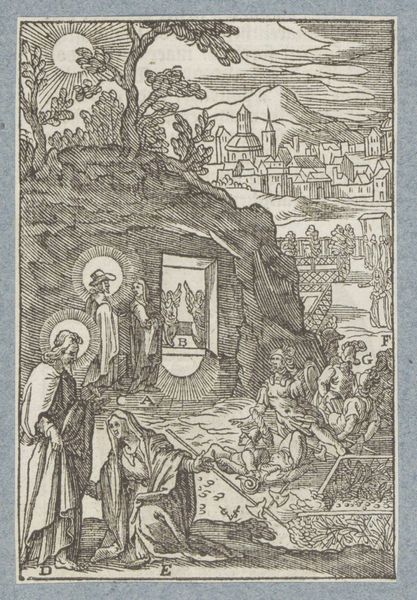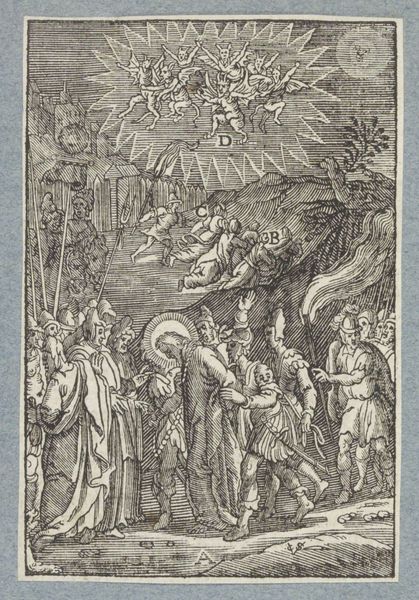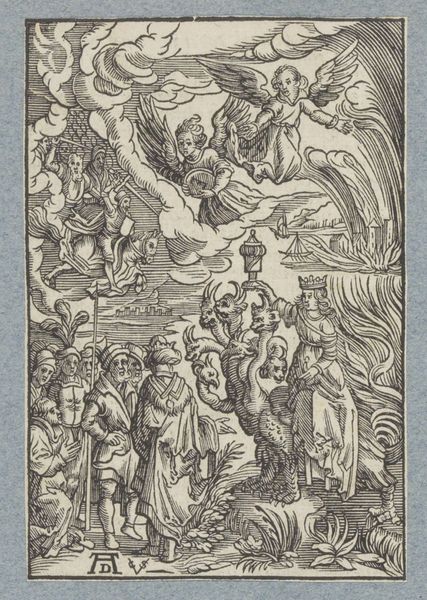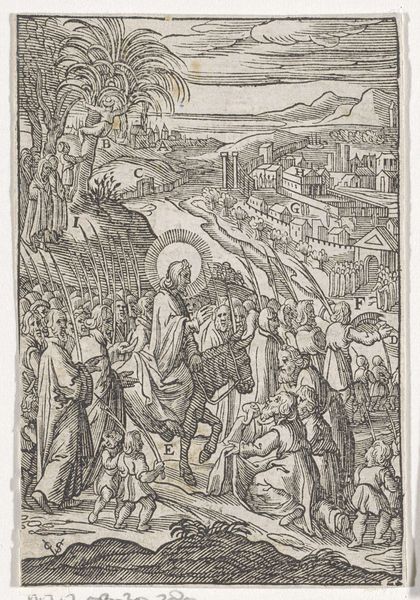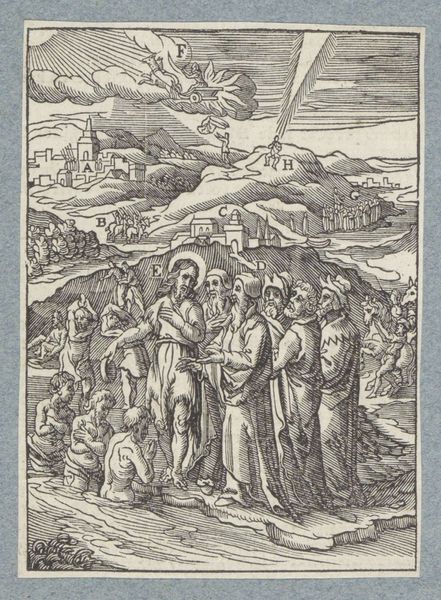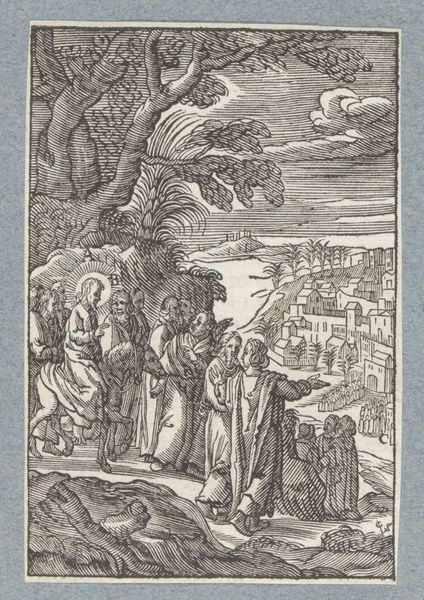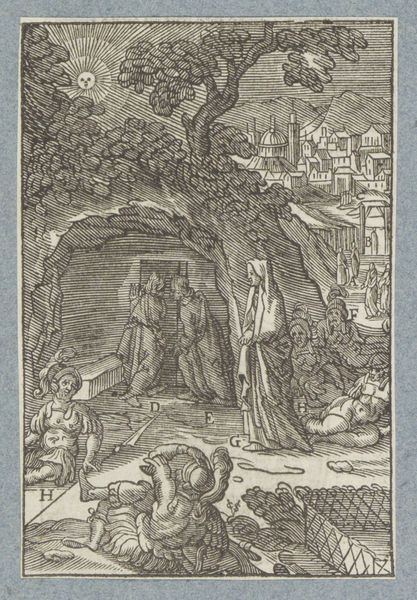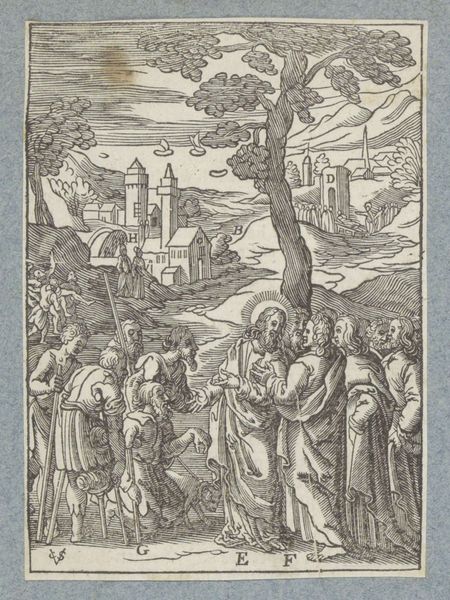
print, engraving
#
narrative-art
#
baroque
# print
#
figuration
#
line
#
history-painting
#
engraving
Dimensions: height 113 mm, width 75 mm
Copyright: Rijks Museum: Open Domain
Curator: Let's focus on "Christus wordt aan het kruis genageld," or "Christ Nailed to the Cross," a compelling engraving created by Christoffel van Sichem II in 1629. What’s your first reaction to it? Editor: The immediate impact is one of stark violence, all rendered through incredibly precise line work. The cross looms large, an instrument of torture taking center stage. The busyness of the scene almost makes it feel frantic. Curator: Precisely. The engraving technique itself— the way he meticulously carves away material to create these lines— reflects the labor and the deliberate nature of both artistic creation and the depicted crucifixion itself. It draws parallels to other trades of the time like woodworking. It's no accident this image circulated widely as it's a reproducible commodity intended for widespread consumption. Editor: Yes, but look at the symbolism packed in. The two, somewhat anthropomorphic, suns above seem to bear witness, suggesting cosmic significance and even divine judgment, beyond just the human participants present. What do they represent? How do they fit within Christian iconography of the period? Curator: I agree, the almost comic-like suns lend the scene additional gravitas and remind viewers of God’s looming judgement and control. Consider too the contrast: a relatively inexpensive printed image displaying extreme luxury afforded to the ruling classes during times of severe religious conflicts and high rates of labor across Europe. Editor: But focusing on religious symbology for a moment, consider the INRI inscription—it’s presented so prominently. And the placement of Christ among common soldiers creates an intentional statement on martyrdom, power, and obedience, no? Curator: The engraving certainly creates a memorable religious image. However, remember the socio-economic realities underpinning art production, like the printing press itself, which are often overlooked. Art doesn’t just symbolize power, it relies on the power to purchase and display these symbolic visual images in order to shape the ideas that proliferate society. Editor: Indeed, a vital interplay to remember and a perfect note upon which to close our conversation. Thank you for offering a lens onto material forces underlying these enduring visual icons! Curator: And thank you for helping reveal their enduring iconic power and its capacity to reach diverse viewers!
Comments
No comments
Be the first to comment and join the conversation on the ultimate creative platform.
